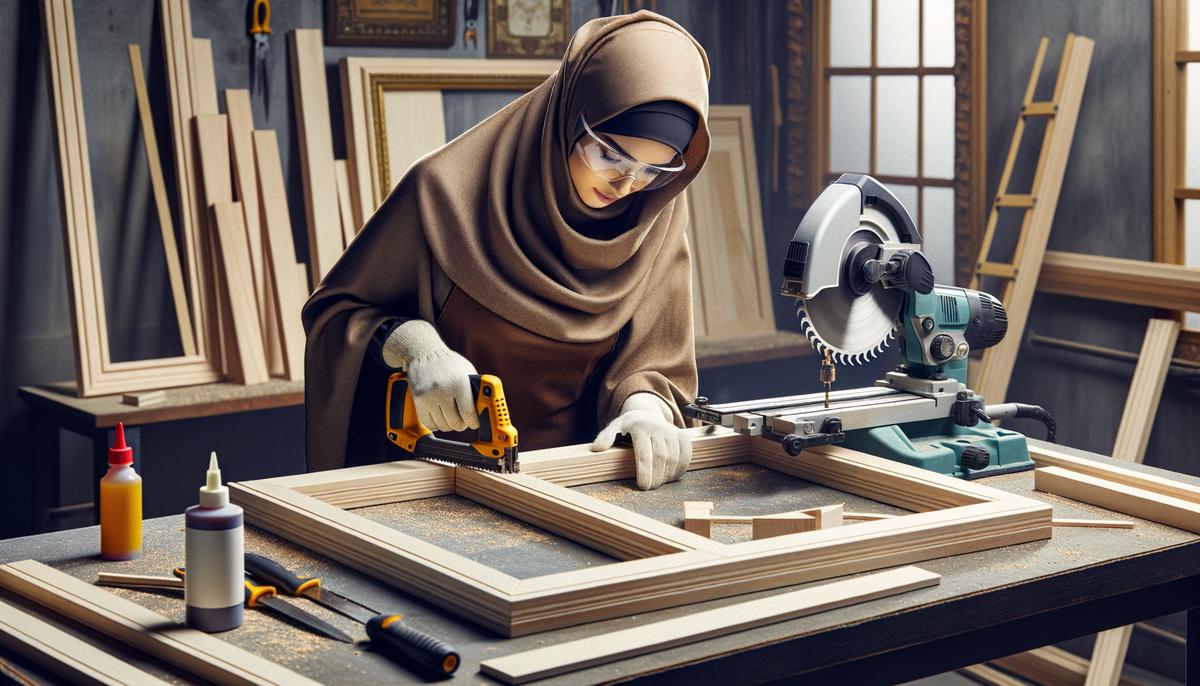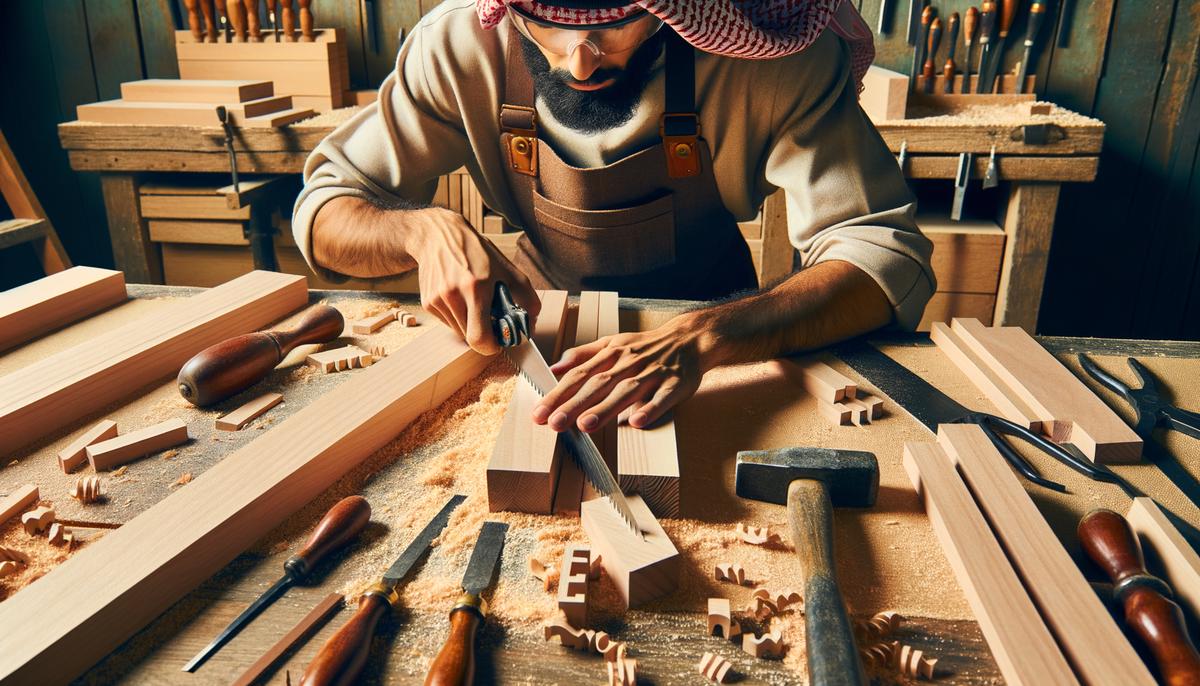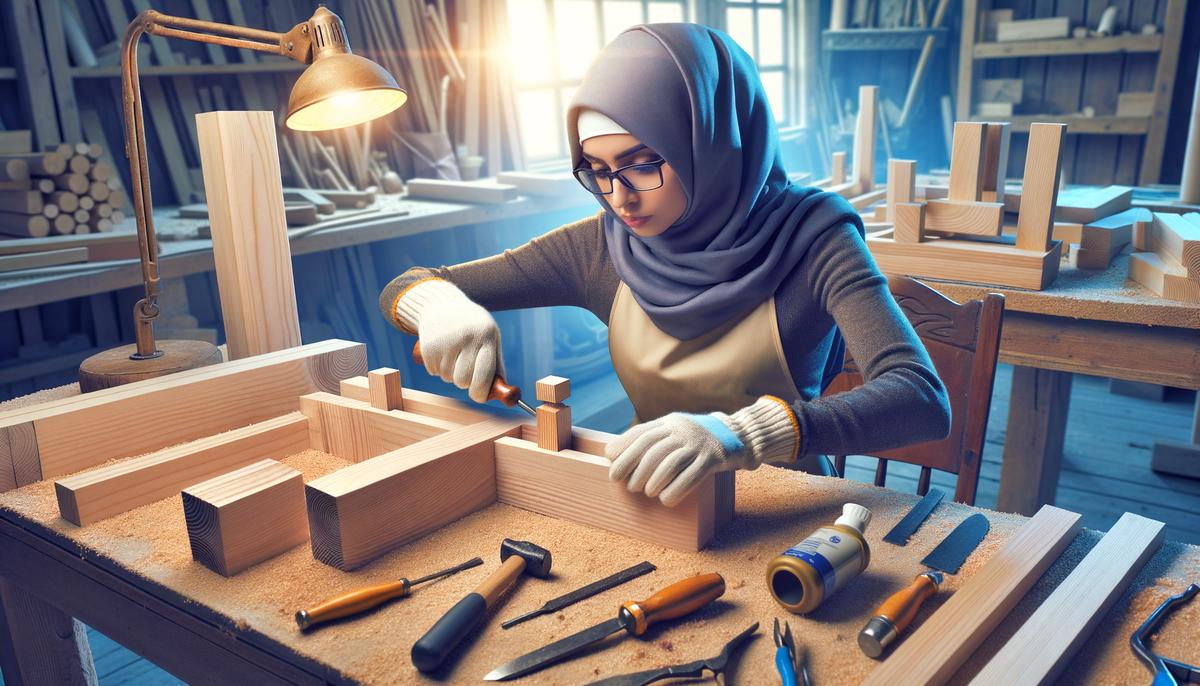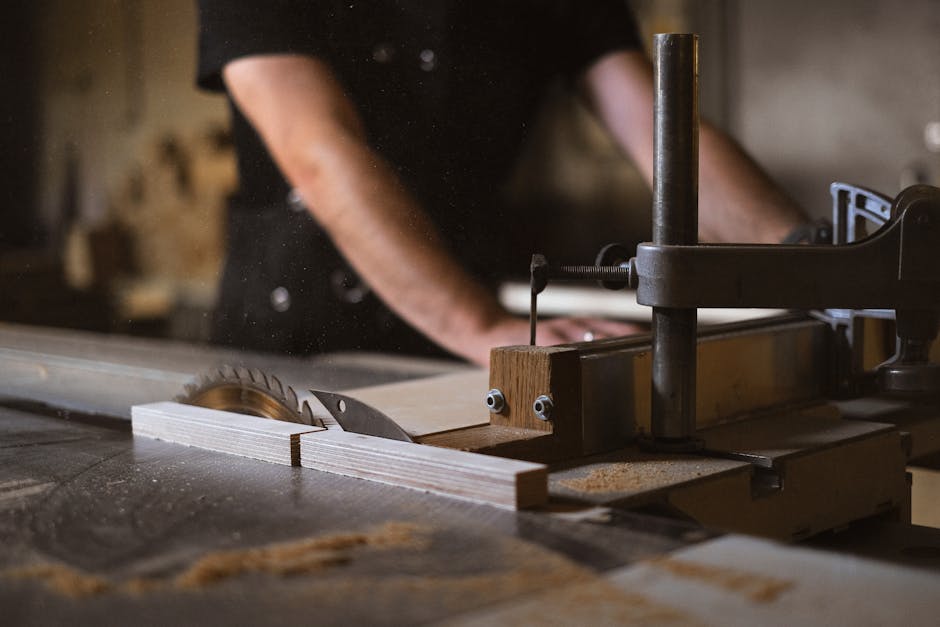Woodworking combines skill, patience, and the right techniques. Understanding various wood joints can enhance your projects' quality and durability. From simple connections to more intricate designs, each joint has its place in a carpenter's toolkit.
1. Butt Joint
Butt joints are essential in basic woodworking. This joint involves pressing two pieces of wood together, typically at a right angle. It's straightforward and requires minimal tools, making it an excellent starting point for beginners.
The main advantage of the butt joint is its simplicity. It can be quickly assembled using glue and mechanical fasteners like screws or nails. This joint is common in wall framing and simple box constructions. While it doesn't offer much strength, it's useful for projects where durability demands are low.
Butt joints lack interlocking features, making alignment tricky, and they don't handle stress well. However, for tasks like building basic frames or small boxes, the simplicity often outweighs the weaknesses. It's a practical choice when speed and ease of assembly are more important than strength.
For securing edges in panels, this joint can be effective, and gluing the butt joint in long-grain to long-grain connections can yield a surprisingly sturdy bond.
In short, butt joints serve as a foundational technique in any carpenter's skill set. They're indispensable for straightforward tasks and efficient for initial learning.

2. Mitered Butt Joint
The mitered butt joint offers a step up from the basic butt joint. By cutting the pieces at an angle, typically 45 degrees, you can achieve a seamless look that hides end grains.
This joint is favored for its aesthetic value. When correctly executed, it's nearly invisible, lending a cleaner look to projects. It's especially useful for picture frames, cabinetry, and decorative boxes, where visual appeal matters.
However, precision is crucial. To achieve a strong and aligned mitered butt joint, your cuts must be spot-on. Even slight deviations can throw off the entire joint, making gaps noticeable and reducing strength. Using tools like a miter saw or a table saw with a reliable miter gauge is important. Double-check your angles and ensure your saw blade is sharp.
Despite its visual advantages, the mitered butt joint isn't known for its strength. It primarily relies on glue and mechanical fasteners. Reinforcing the joint with splines or biscuits can offer additional strength and alignment, making it more stable for functional pieces like furniture or heavy frames.
Tips for a successful mitered butt joint:
- Use sharp tools for clean cuts
- Ensure your angles are precise
- Apply even glue coverage
- Clamp firmly while the glue sets
- Consider using specialized miter clamps for better accuracy

3. Dovetail Joint
The dovetail joint stands out for its blend of strength and visual elegance. This joint features interlocking "tails" and "pins" that resist pulling apart, making it a favorite in drawer construction and fine woodworking.
Dovetail joints excel in tensile strength due to their interlocking nature. The connected parts mechanically lock together, and when combined with wood glue, the joint becomes incredibly strong. It's particularly useful in applications where structural integrity is important, like in drawers, boxes, and cabinets.
Crafting a dovetail joint requires precision and patience. The traditional method involves careful marking, cutting, and chiseling, often done by hand. Tools you'll need include a dovetail saw, chisels, and possibly a dovetail marker for accuracy.
Woodworking technology has advanced, allowing for quicker and more precise dovetail joints with jigs and templates. These can simplify the layout and cutting process, especially for repetitive tasks like building multiple drawers.
"The dovetail joint is not just a method of construction but a mark of quality and tradition in woodworking."
One downside to consider is the complexity and time investment. Dovetail joints can be challenging, especially for beginners. Misalignments can compromise the joint's appearance and strength. Therefore, practice is key. Start with scrap wood to perfect your technique before applying it to your main project.
Tips for a good dovetail joint: use sharp tools for clean cuts, test fit pieces before gluing, and use a bit of paraffin wax on your saw blade to reduce friction. Once glued, clamp the pieces securely but avoid over-clamping, which can squeeze out too much glue and weaken the joint.

4. Mortise and Tenon Joint
The mortise and tenon joint is a classic woodworking technique known for its durability and simplicity. It's ideal for creating long-lasting furniture and structural frames.
This joint consists of a tenon (a projecting piece of wood) fitting into a corresponding mortise (a cavity cut into another piece). This interlocking mechanism is strong and can withstand significant stress, making it suitable for weight-bearing structures like tables, chairs, and traditional wooden frameworks.
Creating a mortise and tenon joint requires precision. The mortise is typically cut using a chisel and mallet, although mortising machines or drills can speed up the process. The tenon is formed by trimming the end of a board to fit the mortise, usually with a backsaw or tenon saw, followed by careful chiseling.
One key strength of this joint is its versatility. It can be adapted to various angles and configurations, whether for a chair leg or a more complex piece of furniture. The joint can be enhanced with wedges or pegs for additional strength.
Achieving a successful mortise and tenon joint takes practice. Precision in cutting both parts is crucial; too tight, and the wood might split during assembly, too loose, and the joint will lack stability. Always ensure your tools are sharp and your measurements accurate. Dry fitting before gluing is a good way to check your work.
When gluing, apply wood glue generously to both parts. Once fitted, clamp the joint securely while the glue sets. This will yield a strong and durable connection that often outlasts other types of joinery.
Key steps for a strong mortise and tenon joint:
- Measure and mark accurately
- Cut the mortise to the correct depth
- Shape the tenon to fit snugly
- Test fit before gluing
- Apply glue evenly
- Clamp securely during drying

5. Rabbet Joint
Rabbet joints are effective for cabinetry and shelving. A rabbet joint involves a two-sided notch cut along the edge of one board, creating a shoulder that the edge of another board fits into. This design provides an increased gluing surface and enhances structural integrity, making it useful for joining parts of cabinets, bookcases, and drawer assemblies.
The ease of construction makes rabbet joints appealing. You can cut the notch with a table saw, router, or dado set, depending on your available tools and project requirements. A table saw with a dado blade is efficient for consistent rabbets, while a router with a rabbeting bit works well for intricate or curved pieces.
Rabbet joints help align edges during assembly, making gluing and clamping easier. This alignment often reduces the need for additional fasteners, though screws or nails can be added for extra security if needed.
For added strength, consider combining the rabbet joint with dowels or biscuits. This hybrid approach can be beneficial for pieces requiring extra durability, such as heavy shelving or frequently used cabinetry.
Rabbet joints work best with hardwoods and plywood of uniform thickness. When working with softer materials or irregular shapes, you might need to fine-tune your cuts for a snug fit. Precision is key; poorly cut rabbets can lead to misalignment and weaker joints.
When gluing, apply an even layer of wood glue along both the notch and mating edge. Clamp securely, but avoid over-tightening to prevent squeezing out too much glue. Specialized corner clamps can be helpful for holding pieces in place while the glue dries.
Rabbet joints are particularly effective for cabinet back edges, providing a flush fit for backing boards, and in drawer construction, offering additional support for drawer bottoms. Their versatility and relative ease of execution make them a fundamental technique for carpenters to master.
| Joint Type | Strength | Ease of Construction | Common Uses |
|---|---|---|---|
| Butt Joint | Low | Very Easy | Basic framing, boxes |
| Mitered Butt Joint | Low-Medium | Moderate | Picture frames, decorative boxes |
| Dovetail Joint | High | Difficult | Drawers, fine furniture |
| Mortise and Tenon | High | Moderate-Difficult | Furniture, structural frames |
| Rabbet Joint | Medium | Easy | Cabinets, shelving |

Mastering different wood joints elevates your woodworking skills and opens up new possibilities for creating sturdy and visually appealing pieces. Each technique, from basic butt joints to more advanced dovetail or mortise and tenon joints, adds value to your craftsmanship.
- Feirer JL. Woodworking Techniques and Projects. Peoria, IL: Bennett & McKnight; 1988.
- Joyce E. The Technique of Furniture Making. London: Batsford; 1987.
- Korn P. Woodworking Basics: Mastering the Essentials of Craftsmanship. Newtown, CT: Taunton Press; 2003.
- Hayward C. Woodwork Joints. New York: Drake Publishers; 1974.
- Jackson A, Day D. Collins Complete Woodworker's Manual. London: HarperCollins; 2005.
